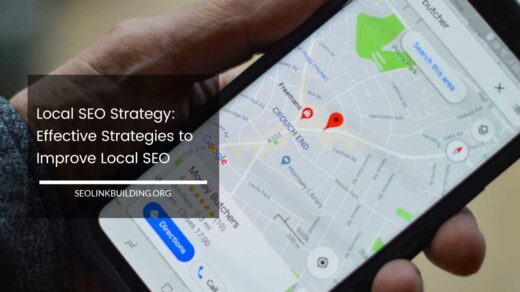Give Your Amateur Blogs a Professional Outlook

Give Your Amateur Blogs a Professional Outlook: Elevate Your Content and Attract Readers
The internet pulsates with a vibrant network of voices. Blogs, the digital diaries of our times, offer a platform for anyone with a passion or expertise to reach a global audience.
Whether you’re a baking enthusiast whipping up delectable creations in your kitchen, a tech whiz demystifying the latest gadgets, or a budding writer weaving captivating tales, your blog allows you to connect with a like-minded community.
However, for many amateur bloggers, the initial excitement of sharing their world can quickly fade amidst the vast competition in the online landscape.
In this sea of voices, how do you make yours stand out, attract readers, and establish yourself as a credible source of information?
The answer lies in taking your amateur blog to a professional level. This doesn’t require a complete overhaul, but rather a series of strategic improvements that elevate the overall quality and reader experience.
Here’s how you can transform your amateur blog into a polished and engaging platform that attracts a loyal following:
Content is King (and Queen): The Foundation of a Successful Blog
-
Quality Over Quantity: Content is not just about churning out frequent posts. It’s about providing well-researched, informative, and engaging articles that resonate with your readers. Back up your claims with data, statistics, or quotes from established experts in your field. Strive for meticulous proofreading to eliminate typos and grammatical errors. A single poorly written post can leave a lasting negative impression on your readers.
-
Find Your Niche and Own It: A blog with a clear focus attracts a targeted audience and allows you to establish yourself as an authority figure within that niche. Instead of trying to cover everything under the sun, identify a specific area you’re passionate about and possess in-depth knowledge of. This could be anything from gluten-free baking recipes and tutorials to smartphone photography tips and techniques, or in-depth historical fiction book reviews with insightful analysis.
-
Develop a Content Calendar for Consistency: Planning your content in advance fosters consistency and allows you to structure your blog around specific themes or topics. A well-organized content calendar keeps you on track, ensures a steady flow of fresh content for your readers, and allows you to capitalize on seasonal trends or current events within your niche.
-
Embrace Content Variety: While staying focused on your niche is crucial, don’t be afraid to experiment with different content formats to keep your audience engaged. Consider incorporating infographics that visually represent complex data, listicles that offer quick and easy takeaways, video tutorials that provide step-by-step demonstrations, or interviews with established figures and thought leaders within your field.
Crafting Compelling Writing: Engaging Your Readers
-
Know Your Audience and Tailor Your Tone: Tailor your writing style to resonate with your target audience. Use language they understand and avoid overly technical jargon. Imagine you’re explaining your topic to a friend who shares your interest but might not have the same level of expertise. Speak directly to them, addressing their needs and pain points.
-
Headlines that Hook: The First Impression Matters: The headline is the first impression your blog post makes. Craft clear, concise, and engaging headlines that accurately reflect the content and entice readers to click. Utilize strong verbs, keywords relevant to your niche, and a hint of intrigue to pique their curiosity.
-
Write with Clarity and Structure for Readability: Structure your content logically with a clear introduction, body paragraphs that delve deeper into specific points, and a compelling conclusion that summarizes your key takeaways and leaves a lasting impression. Utilize subheadings to break up long stretches of text and improve readability. Employ bullet points, numbered lists, and short paragraphs to make your content easily skimmable for readers seeking specific information.
-
Embrace Storytelling: The Power of Personal Connection: Interweave personal anecdotes, case studies, or historical examples into your writing. Storytelling makes your content relatable and memorable, helping readers connect with your message on a deeper level. Share your own experiences within your niche, the challenges you’ve faced, and the lessons you’ve learned. This vulnerability fosters trust and allows readers to see you not just as an expert, but as a human being they can connect with.
Optimizing for Search Engines (SEO): Getting Found in the Digital Jungle
-
Keyword Research: The Language Your Audience Uses: Identify relevant keywords that your target audience might use to find information on your niche. Utilize keyword research tools to uncover search trends and hidden gems. Integrate these keywords naturally throughout your content, including titles, headers, meta descriptions, and the body text. However, prioritize reader experience over keyword density. Don’t stuff your content with keywords in a way that sounds unnatural or disrupts the flow of your writing.
-
Meta Descriptions Matter: The Enticing Snippet: The meta description is a concise summary that appears in search engine results pages (SERPs) below your blog post title. Optimize your meta descriptions to entice readers to click through and ensure they accurately reflect the content, ideally within 160 characters. Include your target keyword and craft a compelling call to action (CTA) that sparks curiosity and promises value.
-
Internal Linking: Building Bridges Within Your Blog: Connect your blog posts by strategically linking to related content within your blog. This improves user experience by helping readers explore deeper into your knowledge base and discover relevant information. It also keeps them engaged on your platform for longer, increasing page views and overall engagement metrics.
-
Building Backlinks: The Currency of Credibility: Backlinks are essentially citations from other websites linking back to your content. Earning backlinks from high-authority sites within your niche demonstrates the credibility and value of your content to search engines. There are various strategies to build backlinks, such as guest blogging on established platforms in your niche, submitting informative articles to relevant online publications, or creating infographics and other shareable content that naturally attracts backlinks.
Design and User Experience (UX): Creating a Welcoming Space
-
Choose a User-Friendly Theme: Aesthetics with Functionality: A visually appealing and user-friendly theme is essential for a professional blog. Opt for a clean, minimalistic design that prioritizes readability and easy navigation. Avoid cluttered layouts, overwhelming animations, or flashy graphics that might distract readers from your content. Choose a color scheme that complements your brand identity and is easy on the eyes.
-
High-Quality Images: Visual Storytelling that Captivates: Images can significantly enhance your content and user experience. Use captivating, high-resolution visuals that complement your text and break up large blocks of text. Ensure proper image optimization for faster loading times. Consider incorporating original photographs you’ve taken, royalty-free stock photos, or even creating your own infographics to represent complex data in a visually engaging way.
-
Optimize Navigation: A Frictionless Journey: Ensure your blog has a clear and intuitive navigation menu that allows readers to find the content they’re looking for easily. Categorize your posts logically and consider implementing a search bar for added convenience. A well-structured navigation menu not only improves user experience but also influences how search engines crawl and index your content.
-
Mobile-Responsiveness: Catering to the On-the-Go Audience: With a significant portion of your audience likely accessing your blog from their smartphones and tablets, a mobile-responsive theme is no longer an option but a necessity. Ensure your blog layout adapts seamlessly to different screen sizes, offering an optimal viewing experience across all devices. Test your blog on various mobile devices to identify and fix any layout issues or compatibility problems.
Building Your Brand and Community: Cultivating Connections
-
Develop a Consistent Brand Identity: Standing Out from the Crowd: Create a recognizable brand for your blog. This includes a consistent logo, color scheme, and overall visual style. Develop a brand voice that reflects your personality and resonates with your audience. Whether it’s lighthearted and humorous, informative and authoritative, or passionate and enthusiastic, ensure your brand voice shines through in your writing, visuals, and overall communication style.
-
Promote Your Blog: Spreading the Word Strategically: Don’t be afraid to spread the word about your blog. Leverage social media platforms like Facebook, Twitter, or Instagram to share your content and connect with potential readers. Join relevant online communities and forums within your niche, and participate in discussions by offering valuable insights and sharing your expertise. Consider guest blogging on other established platforms in your niche to reach a wider audience and establish yourself as a thought leader within your field. There are also paid advertising options available on various social media platforms and search engines, allowing you to target specific demographics and interests to reach your ideal reader.
-
Engage with Your Readers: Fostering a Loyal Following: Encourage active participation by fostering a sense of community. Respond to comments, host Q&A sessions, and answer reader questions in a timely and informative manner. Open dialogue creates a loyal readership, builds trust with your audience, and allows you to gauge their interests and tailor your content accordingly. Consider hosting contests or giveaways to generate excitement and incentivize reader engagement.
-
Embrace Collaboration: Expanding Your Reach: Network with other bloggers in your niche. Collaborate on guest posts, co-create content, or even host joint webinars or online events. Collaboration allows you to tap into each other’s audience base, expand your reach, and offer fresh perspectives to your readers.
Monetization Strategies: Exploring Revenue Streams
-
Advertising: Once your blog has established a loyal readership, consider incorporating advertising as a potential revenue stream. There are various advertising models, such as display advertising, native advertising, or affiliate marketing. Carefully choose ad formats and partners to ensure they align with your brand identity and don’t detract from the reader experience.
-
Affiliate Marketing: Partnering for Profit: Affiliate marketing allows you to earn commissions by promoting other companies’ products or services that complement your niche. Carefully research and select affiliate programs relevant to your content and audience. Ensure the products or services you promote are high-quality and genuinely valuable to your readers. Disclose your affiliate relationships transparently and focus on creating informative content that organically integrates your affiliate links.
-
Offer Digital Products: If you possess in-depth knowledge and expertise within your niche, consider creating and selling digital products such as eBooks, online courses, or downloadable templates. These products offer valuable content to your readers while providing you with a recurring revenue stream.
-
Freelance Services: Leverage the credibility and audience you’ve built through your blog to offer freelance services related to your niche. This could involve content writing, editing, photography, graphic design, consulting, coaching, or social media management for other businesses or individuals.
-
Paid Memberships: Consider offering exclusive content or benefits through a paid membership program. This could include in-depth tutorials, downloadable resources, access to a private community forum, or live Q&A sessions with you. Provide significant value for your paying members to justify the subscription cost and ensure a loyal membership base.
Final Word: The Journey of Continuous Improvement
Taking your amateur blog to a professional level is an ongoing process. By implementing the strategies outlined above, you’ll elevate the quality of your content, enhance user experience, and establish yourself as a credible voice within your niche. Remember, consistency is key.
Regularly publish high-quality content, actively engage with your audience, and stay up-to-date with the latest trends and SEO best practices. As you continue to learn, grow, and refine your approach, your blog will blossom into a thriving platform that attracts a loyal readership and fuels your passion for sharing your knowledge with the world.














About the blog speed, it can be affected also by using of plugins, especially sites using WordPress. I’ve ever experienced my site so slow, so I consider with using of plugins as needed site.
Thanks for sharing this information, so helpful.
Absolutely! Plugins should only be used when needed. However, many users test a new plugin and leave it as it is, increasing the numbers of plugins and slowing down the site.
Thank you for stopping by :)
Hi Admin,
That’s true.. We should really work hard to give our blogs a professional look apart from writing unique and creative content.. And Implementing Responsive Blog Design is the key today as most of the searches today take place on smartphones..
Regards,
Ovais Mirza
Hello Ovais,
Apart from that, starting April 21, Google will be using mobile-friendliness as a ranking signal, so it’s important that we use responsive blog theme.
Thank you for stopping by!
Nice Blog. Thanks for sharing this.
Great to know about these tips. I am on WordPress and can definitely try some of them.
Glad to know you like it.